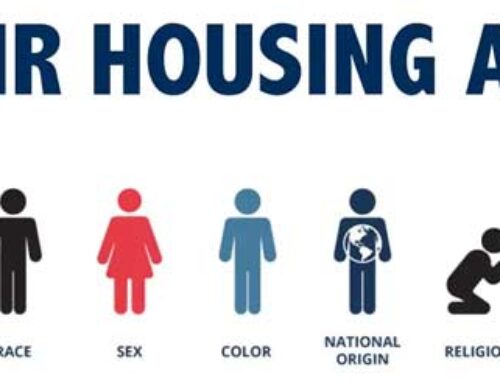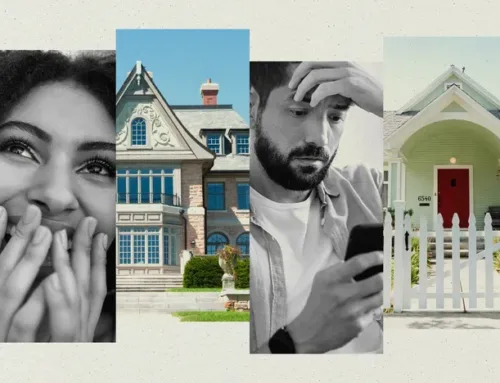
Ellen Coleman had never received so many offers on a house in her 15 years of selling real estate.
She listed a fixer-upper in suburban Washington, DC for $275,000 on a Thursday. By Sunday evening, she had 88 offers.
“The offers just kept coming,” she said. “I felt like Lucy with the chocolates. I’m thinking, ‘This is just out of control.'”
Of those 88 offers, 76 were all-cash, said Coleman, who works for RE/MAX Realty Centre. There wasn’t even enough time for all of the bidders to visit the property. She said 15 offers were sight unseen.
The four-bedroom, 1,800 square-foot home sold for $460,000, nearly a 70% increase from the asking price. She said the winning bid was not the highest offer, but it was all-cash with no contingencies and it had paperwork in place. The buyer, she said, is an investor who is likely to renovate and resell at an even higher price.
“It was a lower priced property for the area and may have been an outlier,” she said. But even her other listings have typically been getting closer to 15 offers. “Several people came in wanting to be homeowners and do the repairs themselves. There is such low inventory out there and people feel like that is a way they can get into a home.”
In fact, the inventory of available homes for sale is now at a record low, driving competition and home prices ever higher across many regions of the country. With demand for homes remaining strong, it’s hard to imagine when the market might become more affordable and that has left many buyers wondering whether they should act now or just wait it out.
Why are home prices on a tear?
It was a different story a year ago. Home buying fell off a cliff when the pandemic took hold in the US, with home sales dropping by about 40%, said Chris Stroud, chief of research at HouseCanary, a real estate technology and analytics company.
But while home sales bounced back last May, the inventory did not.
“That’s been the theme from then until now,” he said. “Consequently, prices have been on a tear going upward because of lack of supply.”
The median price of a home has risen 16% from last year, according to the National Association of REALTORS, and they have increased even more in some regions of the country like the Northeast and West, which are both up 21% from last year.
Meanwhile, inventory has continued to linger at record lows. In February, the number of available homes for sale was down nearly 30% from a year ago.
Frustrated buyers want to know when does this end?
“In the second half of this year we will see higher mortgage rates and, as they tick up, it will cool,” said Brad Dillman, chief economist at Cortland, a multifamily real estate development company.
“Homes will sit on the market longer, markets will accumulate more active listings. Home building will continue and new homes will pile up a bit. Those will continue to moderate price appreciation.”
But that won’t mean homes will become that much more affordable for buyers.
Home prices were up 10.4% at the end of 2020 compared with the year before, according to the S&P CoreLogic Case-Shiller U.S. National Home Price NSA Index, with cities like Phoenix, Seattle, and San Diego seeing the largest price gains.
“I don’t think people are getting a 10.4% increase in their income or saving rate to substantiate those gains,” said Dillman. “It is competition for a home that is driving the price up.”
Why are there no houses to buy?
Even in a sellers market, many people are avoiding the scrum they would face in finding their next home and are staying put, said Liz Brent, broker and founder of GoBrent, a real estate firm in Maryland.
Millions of homeowners took advantage of record low interest rates over the past year to refinance into a lower rate, more affordable payment or shorter loan term on their current mortgage. Those homeowners aren’t likely to move soon, said Brent.
In addition, another 2.57 million homeowners are in forbearance programs with their lenders, according to Black Knight. Those homeowners may ultimately sell to find a more affordable living situation, but not right now.
While homebuilders are making strides in bringing more inventory to the market, homebuilding dropped to a six-month low last month, according to the Commerce Department. The setback, partially due to severe cold weather in many parts of the country, only exacerbated inventory challenges.
“People want to think that this is coronavirus-related,” Brent said. “Yes, there are people who don’t want to sell because of the pandemic, but we are in a housing crisis that has been building for years.”
And greater competition for fewer homes that sell at ever higher prices is moving the goal posts for many would be buyers who are trying to save, especially first-time buyers.
“Unfortunately when you have 5, 10, 15, 25 offers on a house, the only buyers that get homes are buyers that are extremely financially secure and buyers who are willing to say ‘I’ll pay almost anything’,” Brent said.
Buy now or sit it out?
Even as inventory shrank over the past year, the pool of buyers has grown, said Carlo Siracusa, president of residential brokerage at Weichert.
“The inventory will remain tight for a while because there are all these buyers coming into the market — urban dwellers, Millennials, first time buyers — looking for bigger space or to live somewhere new,” he said.
Siracusa doesn’t think it makes sense to wait if you are ready to buy now. “Interest rates will go up. But there’s no indication that real estate prices will go down. Demand is strong, supply is low.”
More inventory is expected to become available later this spring, said Danielle Hale, chief economist at Realtor.com. That will at least provide more selection, but not necessarily price relief.
More sellers typically show up at the beginning of May, she said, but there will still be more buyers than homes. So if buyers are hoping to sit it out and wait for lower prices, they may be disappointed.
There is a point at which some of the frenzy of demand will slow down, Hale said. When people can’t qualify for a loan for the home they would like to live in or when renting makes more sense, they may drop out of the search and the pace of price growth will slow down.
“But prices will stay steady or continue to rise, because there will still be more buyers than sellers, and interest rates will rise,” she said.
Though rising rates could eventually lead to lower prices in the long term, buyers who hesitate could miss out on the benefits of historically low rates in the short term.
“If you find the house you like and you can afford it, that house is not going to be around for long,” said Melissa Cohn, an executive mortgage banker with William Raveis Mortgage. “If you’re comfortable you can buy it, you should proceed. Interest rates will go up. That is a certainty.”
She said that typically when rates go up, home prices go down — or at least stop rising so quickly. But not immediately and not everywhere.The housing market will ultimately cool, Cohn said. “But that doesn’t mean prices will drop 20%.”
Source- https://www.cnn.com/2021/03/29/success/when-will-housing-market-cool-off-feseries/index.html
By Anna Bahney, CNN Business






